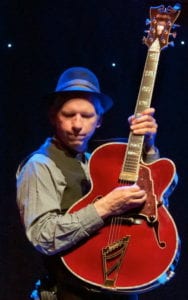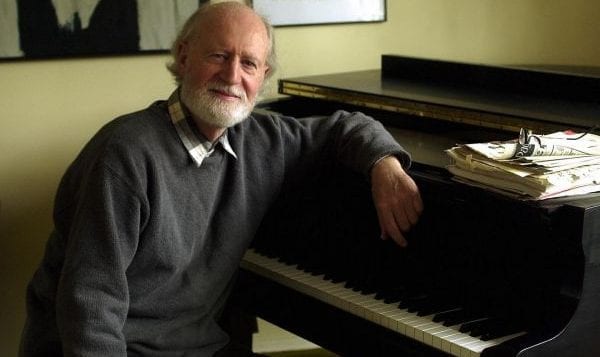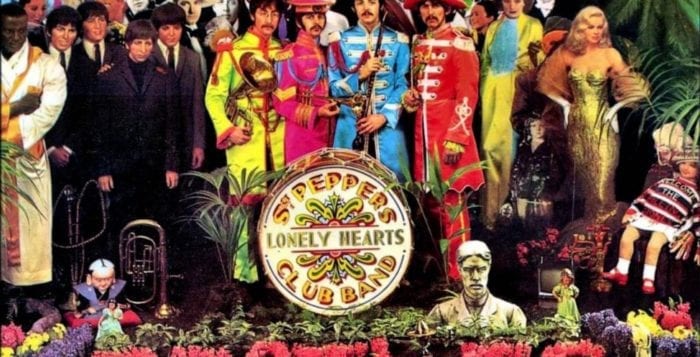Evening will honor the music of longtime Smithtown resident
By Kevin Redding

A reporter once asked the late jazz and blues pianist and singer Mose Allison — regarded among musicians like Bonnie Raitt, Leon Russell, Pete Townshend and Van Morrison as “one of the finest songwriters in 20th century blues” — why he wasn’t more famous.
“Mose, you were a social critic before Bob Dylan, satirical long before Randy Newman and rude before Mick Jagger,” the reporter said. “How come you’re not a big star?” Allison, who was born in Mississippi and moved from New York City to Smithtown in the mid-1960s to raise a family and spent much of his time walking in the local woods and swimming in the Long Island Sound, responded: “Just lucky, I guess.”
On Saturday, March 24, The Long Island Museum, in partnership with WUSB-FM’s Sunday Street Concert Series and the Greater Port Jefferson-Northern Brookhaven Arts Council, will give the 2006 Long Island Music Hall of Fame inductee his proper due with The Word From Mose: A Celebration of the Music of Mose Allison, a tribute concert in the Carriage Museum’s Gillespie Room at 7 p.m.

The concert, following the tradition of other Sunday Street Series shows organized by Charlie Backfish, Stony Brook University history lecturer and host of the university’s weekly radio program “Sunday Street,” will feature local and outside musicians, who will strum and sing through decades of Allison’s breakthrough material, including his more well-known tracks “Your Mind Is on Vacation,” “Everybody’s Crying Mercy” and “I Don’t Worry About a Thing.”
Allison, who died Nov. 15, 2016, just four days before turning 89, was a four-time Grammy nominee and frequent collaborator with jazz greats Zoot Sims and Stan Getz whose songs spanned more than 30 albums — The Rolling Stones, Diana Krall, The Who, The Pixies and Elvis Costello are among those who have recorded Allison’s songs.

The lineup includes “Sunday Street” regular and New York-based singer-songwriter Pete Kennedy; Pat Wictor, electric and slide guitarist of the group Brother Sun; Jack Licitra, a Sayville-based keyboardist and guitarist as well as the founder of the music-teaching studio South Bay Arts in Bayport; and Abbie Gardner, an acclaimed Dobro player who has toured for many years as part of the trio Red Molly. Some members of Allison’s family, including his daughter and singer-songwriter Amy Allison, will also be in attendance.
The evening will also include a screening of a short BBC documentary on Allison called “Ever Since the World Ended,” featuring interviews with Costello, Morrison, Raitt and Loudon Wainwright III and footage of Allison performing.
“Not only is he such an important artist, Mose Allison was someone who lived in this area for many decades and we thought it was time to do something like this for him,” Backfish said of the decision to honor the musician. “When he wasn’t on tour, which was quite often, he would be back in the area and playing shows at the Staller Center at Stony Brook University or jazz clubs in Port Jefferson.”

Backfish said he also had the opportunity to interview Allison on his radio program many years ago. “He had such an incredibly rich catalog in so many ways and these artists are going to get together and play both well-known songs of his and the deep tracks,” he said. “I would hope that if people aren’t aware of Mose, they’ll suddenly find someone they will check out and listen to, and for those who know him, this will be a great way to celebrate his music and listen to artists reinterpret his songs.”
Wictor, a longtime Allison fan who, with his band, recorded a version of “Everybody’s Crying Mercy,” said Backfish approached him to participate in the concert for his “affinity” for the man’s work. “I love Mose partly because he cannot be categorized easily,” Wictor said. “He sort of mixed jazz and blues, and social commentary, in a way that nobody else did. And I like his sense of humor in his lyrics, which were always a little sardonic and mischievous. He comes across as a person that doesn’t suffer fools gladly and that’s always enjoyable to me. The songs themselves are very musically interesting, too — blues-based but they always have a unique musical and lyrical quality unlike anything else.”

Kennedy said Allison was unusual among jazz musicians in his time because he wrote a lot of songs with lyrics, while others primarily stuck to instrumental compositions. “Allison actually wrote songs that he sang and that’s what we’re focusing on during the concert,” said Kennedy, who noted that he’s had a lot of fun examining Allison’s songs more closely and learning them in anticipation of the show. “His songs sound totally modern to me now, even the old ones from the 1950s and ’60s. The writing is really clever, really humorous and had a little bit of social commentary to it, but not in a negative way.”
Licitra, too, expressed his excitement over his involvement, calling Allison’s music “the thinking man’s blues.” “I’m really looking forward to giving people a taste of his style of intellectualism and humor,” he said. “And for me, this is all about the group of performers on the bill. I’m a big fan of all of them and so I’m excited about playing with them and seeing how they each interpret Mose’s [work].”
The jazz legend’s son John Allison, who grew up in Smithtown, said while his father was a true “musician’s musician” and beloved in many artist’s circles, he was as low profile as could be at home. “There he was, living in Smithtown, so unassuming that even our neighbors, for 15 years, didn’t know what he did until they saw him on TV with Bonnie Raitt for a PBS concert at Wolf Trap,” John Allison said, laughing. “He just wanted to do his thing. He read books and played music. I’d come home from high school and he’d be listening to some weird Chinese, classical music and just laughing and loving it … [and] sometimes he did tai chi in the living room.”
The Long Island Museum is located at 1200 Route 25A, Stony Brook. Advance tickets to the tribute show are $25 through Friday, March 23 at www.sundaystreet.org with tickets at the door for $30 (cash only). Beer, wine and cider will be available for purchase. For more information, please call 631-751-0066.










